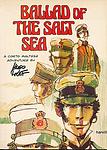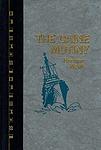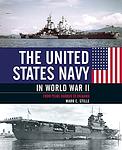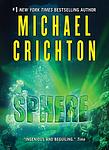The Greatest "Pacific Ocean" Books of All Time
Click to learn how this list is calculated.
This list represents a comprehensive and trusted collection of the greatest books. Developed through a specialized algorithm, it brings together 284 'best of' book lists to form a definitive guide to the world's most acclaimed books. For those interested in how these books are chosen, additional details can be found on the rankings page.
Genres
Countries
Date Range
Reading Statistics
Click the button below to see how many of these books you've read!
Download
If you're interested in downloading this list as a CSV file for use in a spreadsheet application, you can easily do so by clicking the button below. Please note that to ensure a manageable file size and faster download, the CSV will include details for only the first 500 books.
Download-
1. Cloud Atlas by David Mitchell
This novel is a unique blend of six different stories, each set in a different time and place, spanning from the 19th century South Pacific to a post-apocalyptic future. Each tale is written in a different style, reflecting the time and setting it represents, and they are all connected through shared themes and recurring motifs. The stories are nested within each other, with each interrupted by the next, only to be concluded in the second half of the book. The novel explores themes of predacity, civilization, reincarnation and the eternal recurrence of the same behaviors throughout history.
-
2. Life of Pi by Yann Martel
A young Indian boy named Pi Patel survives a shipwreck and finds himself adrift in the Pacific Ocean on a lifeboat with a Bengal tiger named Richard Parker. Over the course of 227 days, Pi uses his knowledge of animal behavior and survival skills to coexist with the tiger, ultimately leading to an unusual and deeply spiritual journey. The story explores themes of faith, survival, and the interpretation of reality.
-
3. Ballad of the Salt Sea by Hugo Pratt
This graphic novel follows the adventures of a young sailor who becomes entangled in a dangerous plot involving pirates, kidnappings, and political intrigue in the South Seas. Set in the early 20th century, the story is filled with historical references and exotic locales, providing a rich backdrop for the complex narrative. The sailor's journey is not just physical but also emotional, as he navigates the treacherous waters of personal relationships and moral dilemmas.
-
4. The Caine Mutiny by Herman Wouk
The book is a classic naval story set during World War II, where a young officer is assigned to a minesweeper ship, USS Caine, under the command of a paranoid and possibly mentally unstable captain. This leads to a mutiny, a court-martial, and a dramatic climax in a storm-tossed court-room. The novel explores themes of authority, personal courage, and the complexities of leadership and command.
-
5. In the Heart of the Sea by Nathaniel Philbrick
This historical narrative tells the true story of the 19th-century whaleship Essex, which was rammed and sunk by a sperm whale in the South Pacific. Stranded thousands of miles from land, the crew of the Essex was pushed to their limits and forced to do the unthinkable to stay alive. The tale explores the harrowing ordeal of these men through their long journey at sea, their encounters with nature's fury, hunger, disease, and their own fear and despair.
-
6. The Sea-Wolf by Jack London
"The Sea-Wolf" is a gripping adventure novel that tells the story of a refined literary critic who is rescued from a shipwreck by a brutal sea captain. The protagonist is forced to adapt to the harsh life of a sailor while clashing with the captain, a cruel and amoral man who believes in the survival of the fittest. As the narrative progresses, the protagonist not only survives but thrives, proving that gentleness and civilization are not signs of weakness. Eventually, he manages to escape the ship with a woman who was also rescued, and they end up stranded on a deserted island where they fall in love and start a new life.
-
7. Unbroken: A World War II Story of Survival, Resilience, and Redemption by Laura Hillenbrand
This book is a gripping true story of a WWII veteran, who was an Olympic runner before the war. His plane crashes in the Pacific during a reconnaissance mission, and he survives for 47 days on a raft, only to be captured by the Japanese Navy and sent to a series of brutal prisoner of war camps. Despite the immense suffering, he remains unbroken, maintaining his dignity and hope, and eventually finds redemption after the war.
-
8. Two Years Before the Mast by Richard Henry Dana
This book is a riveting memoir of a young man who leaves Harvard University due to health issues and becomes a sailor on a ship traveling from Boston to California, via Cape Horn, in the early 19th century. The narrative provides a vivid depiction of life at sea, the harsh working conditions of sailors, the stunning beauty of untouched California, and the brutal exploitation of Native Americans. The author's experiences and observations offer a detailed and realistic picture of the time, making it a valuable historical document.
-
9. The Two-Ocean War: A Short History of the United States Navy in the Second World War by Samuel Eliot Morison
This book provides a comprehensive history of the United States Navy's role in World War II, covering both the Atlantic and Pacific theaters. It details significant naval battles, strategies, and the role of key individuals. The book also delves into the technological advancements of the time, including the development of aircraft carriers and submarines, and their impact on the outcome of the war. The author's firsthand experience as a naval officer provides an insightful and personal perspective to the events.
-
10. The Complete Short Stories of Jack London by Jack London
This collection features the complete short stories written by a renowned American author, known for his vivid portrayals of adventurous and survivalist themes. The stories, often set in the harsh landscapes of the Klondike Gold Rush or the South Pacific, examine complex human nature, survival instincts, and socio-economic conditions of the time. The author's unique storytelling style, combined with his keen observational skills and deep understanding of human psychology, makes each story a compelling read.
-
11. Kon-Tiki by Thor Heyerdahl
This book is a captivating real-life adventure story about a Norwegian explorer and his crew who set out on a daring voyage across the Pacific Ocean on a balsa wood raft. The journey, undertaken to prove a controversial anthropological theory about the settlement of Polynesian islands, is filled with danger, excitement, and discovery. The author's vivid descriptions of the perilous journey, the magnificent sea life they encounter, and the ultimate success of their expedition make this a thrilling and inspiring read.
-
12. Journals (Cook) by James Cook
This book is a compilation of the personal journals of an 18th-century British explorer and naval captain, who embarked on three significant voyages of discovery across the Pacific Ocean. These entries provide a firsthand account of his encounters with various indigenous peoples, his detailed observations of the flora, fauna, and geography of newly discovered lands, and his experiences of seafaring life. The journals also record his scientific experiments and astronomical observations, contributing to the fields of geography, anthropology, and ethnography.
-
13. Sailing Alone Around the World by Joshua Slocum
"Sailing Alone Around the World" is a captivating memoir of a man's solo journey around the globe in a small boat. The narrative details the author's adventures and challenges as he navigates the high seas, encounters different cultures, and grapples with the solitude of his journey. The book stands as a testament to human resilience and the lure of adventure, providing a detailed account of maritime travel in the late 19th century.
-
14. Gipsy Moth Circles the World by Francis Chichester
This book chronicles the author's solo sailing journey around the globe in his yacht, the Gipsy Moth IV. Battling harsh weather conditions, loneliness, and equipment failure, he successfully circumnavigates the world, starting and ending in England, and becoming the first person to do so by the clipper route, and the fastest circumnavigator, in nine months and one day overall. The book details his adventure and the challenges he faced, providing an intimate look at the world of sailing and exploration.
-
15. Shipwreck of the Whaleship Essex by Owen Chase
This book is a first-hand account of the infamous maritime disaster involving the sinking of a whaleship by a sperm whale in the South Pacific. It chronicles the harrowing experiences of the ship's crew who were left stranded in the open sea for months. The survivors faced starvation, dehydration, and resorted to cannibalism in their desperate struggle for survival. The narrative serves as a testament to human endurance and resilience in the face of extreme adversity.
-
16. Mutiny on the Bounty by William Bligh
The book is a historical narrative about the infamous mutiny that took place on the HMS Bounty in 1789. It chronicles the journey of Lieutenant William Bligh and his crew as they embark on a mission to transport breadfruit plants from Tahiti to the West Indies. The journey takes a tragic turn when some of the crew members, led by Master's Mate Fletcher Christian, rebel against Bligh's harsh discipline, seize control of the ship and set Bligh and his loyalists adrift in a small boat. The narrative is a gripping account of Bligh's survival and his relentless pursuit of justice against the mutineers.
-
17. Sphere by Michael Crichton
In "Sphere" by Michael Crichton, a team of scientists is sent to investigate a mysterious spacecraft discovered deep underwater. As they explore the alien vessel, they uncover a massive, perfectly spherical object that seems to possess incredible powers and the ability to manipulate reality. With their own fears and hidden desires becoming increasingly dangerous, the team must navigate the psychological and physical challenges of the sphere, questioning their own sanity and the true nature of the enigmatic object.
-
18. The Rising Sun by John Toland
"The Rising Sun" provides an in-depth historical account of Japan during World War II from the perspective of the Japanese. The book explores the political and military events leading up to the war, the conduct of the war itself, and the aftermath, including the bombings of Hiroshima and Nagasaki. The narrative is based on interviews, diaries, memoirs, and letters of the people who lived through these events, offering a unique and comprehensive look at Japan's role in the war.
-
19. Mapping The Deep by Robert Kunzig
"Mapping The Deep" explores the mysterious and awe-inspiring world beneath the ocean's surface. Through captivating storytelling and scientific research, the book delves into the history of deep-sea exploration, revealing the incredible discoveries and challenges faced by scientists and explorers. From the eerie abyssal plains to the vibrant ecosystems of hydrothermal vents, the author takes readers on a journey to understand the profound impact of the deep sea on our planet and the potential it holds for future exploration and understanding.
Reading Statistics
Click the button below to see how many of these books you've read!
Download
If you're interested in downloading this list as a CSV file for use in a spreadsheet application, you can easily do so by clicking the button below. Please note that to ensure a manageable file size and faster download, the CSV will include details for only the first 500 books.
Download

















